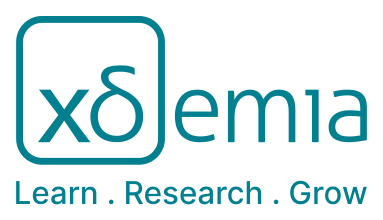MAIN EU STANDARDS REGARDING PUBLIC LIGHTING
3 Enrollments Level : IntermediateRelevance
Lighting standards in the EU are critical for ensuring safety, efficiency, and sustainability across various sectors. These regulations support the EU’s commitment to reducing energy consumption and environmental impact through the adoption of high-performance, eco-friendly lighting solutions. Professionals in architecture, electrical engineering, construction, and facility management must stay updated with EU standards to ensure compliance, avoid legal risks, and contribute to sustainable development. With increasing regulatory requirements and advancements in lighting technology, this course is essential for anyone involved in lighting design, manufacturing, installation, or policy development.
Abstract
This course provides a comprehensive overview of key European Union (EU) standards governing lighting systems, including energy efficiency, safety, environmental impact, and performance criteria. Participants will gain a clear understanding of how EU directives, regulations, and standards shape the design, installation, and maintenance of lighting systems in residential, commercial, industrial, and public spaces. The course equips professionals with the necessary knowledge to ensure compliance with EU requirements while promoting energy-efficient and sustainable lighting solutions.
Learning Outcomes
By the end of this course, participants will be able to:
Understand EU Lighting Standards – Identify and interpret key EU regulations and directives related to lighting systems.
Apply European Standards (EN, IEC) – Recognize and implement relevant EN (European Norm) and IEC (International Electrotechnical Commission) standards in lighting projects.
Ensure Energy Efficiency Compliance – Analyze EU energy efficiency requirements (e.g., EcoDesign, Energy Labeling) for lighting products.
Evaluate Safety and Environmental Impact – Assess lighting systems for compliance with safety and environmental standards, including RoHS and REACH regulations.
Navigate Certification and Testing Processes – Understand conformity assessment procedures such as CE marking and product certification.
Prior Knowledge
To maximize learning outcomes, participants should have:
Basic knowledge of electrical systems and lighting technology.
Familiarity with EU regulations (beneficial but not mandatory).
An understanding of energy efficiency principles (recommended).
Experience in lighting design, installation, or product development (optional but useful).
This course is suitable for students, engineers, designers, policymakers, manufacturers, and other professionals involved in lighting projects within the EU.
Keywords
- Lighting standards
- Energy Efficiency
- Sustainability in Lighting
- EU STANDARDS
Elements
1. About this Building Block
About this Building Block
EU Lighting Regulations refer to a set of rules and standards developed by the European Union to govern the design, production, use, and disposal of lighting products across member states. These regulations are aimed at ensuring that lighting products meet specific requirements for energy efficiency, safety, environmental impact, performance, and market compliance.
EU lighting regulations are part of a broader initiative to promote sustainability, reduce energy consumption, and minimize the environmental impact of products sold within the EU. These regulations aim to create a single market for lighting products, ensuring that they are safe, efficient, and meet the needs of consumers, while also contributing to the EU's energy and environmental goals.
2. Presentations
presentation
MAIN EU STANDARDS REGARDING LIGHTING
TABLE OF CONTENTS
•Module 1: Introduction to EU Lighting Regulations
•Module 2: Essential EU Directives and Regulations
•Module 3: European Lighting Standards (EN, IEC, ISO)
•Module 4: Energy Efficiency and Sustainability in Lighting
•Module 5: Safety and Performance Requirements
•Module 6: Certification, Testing, and Market Compliance
•Final Assessment and Certification
3. Reader
reader
General information about main EU standards regarding lighting
